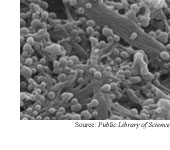|
NEWS
|
Fake four-year-old knows something
A synthetic four-year-old child in the virtual
world Second Life has beliefs that it can reason about,
which makes it appear more lifelike. The character is
part of ongoing research aimed at creating internal mental
states in artificial beings that will allow them to reason
about the beliefs of others in addition to having beliefs
of their own. (Toward
Logic-Based Cognitively Robust Synthetic Characters in
Digital Environments, The First Conference on Artificial
General Intelligence (AGI-08), March 1-3, 2008, Memphis,
Tennessee)
Entanglement on demand
A method of generating, storing and retrieving
entanglement -- when one or more properties of two or
more particles become indistinguishable -- is an important
step toward building practical quantum computers and networks.
Quantum computers have the potential to be much faster
than ordinary computers for certain tasks like cracking
secret codes. (Mapping
Photonic Entanglement into and Out Of a Quantum Memory,
Nature, March 6, 2008)
Healing with nanoparticles and nanofibers
 The timed release of a growth factor from nanoparticles
suspended in nanofibrous tissue scaffolds promoted tissue
growth and blood vessel formation in laboratory rats.
The technique makes it possible to deliver growth factor
over time, and could lead to treatments that boost the
body's ability to grow new tissue -- including bone --
to heal wounds. (Nanofibrous
Scaffolds Incorporating PDGF-BB Microspheres Induce Chemokine
Expression and Tissue Neogenesis In Vivo, PLoS
ONE, March 5, 2008)
The timed release of a growth factor from nanoparticles
suspended in nanofibrous tissue scaffolds promoted tissue
growth and blood vessel formation in laboratory rats.
The technique makes it possible to deliver growth factor
over time, and could lead to treatments that boost the
body's ability to grow new tissue -- including bone --
to heal wounds. (Nanofibrous
Scaffolds Incorporating PDGF-BB Microspheres Induce Chemokine
Expression and Tissue Neogenesis In Vivo, PLoS
ONE, March 5, 2008)
Like a rolling cell...
A method of sorting cells takes advantage of the
way cells roll along surfaces. By making tracks of certain
types of molecules that interact lock-and-key fashion
with receptors on specific types of cells, researchers
were able to deflect those cells by 5 to 10 degrees as
they flowed through a microfluidic device. The technique
could lead to simple, inexpensive clinical and field tests
for cancer and other diseases. (Nanomechanical
Control of Cell Rolling in Two Dimensions through Surface
Patterning of Receptors, Nano Letters, published
online March 6, 2008)
Building with DNA
Three-pointed stars formed by joining seven DNA
strands make building blocks for three-dimensional nanostructures.
Sixty of these building blocks, or tiles, can be made
to form buckyballs about 100 nanometers in diameter. Three-dimensional
nanostructures like these could be used to deliver drugs,
make new kinds of materials and serve as templates for
nanoelectronic devices. (Hierarchical
Self-assembly of DNA into Symmetric Supramolecular Polyhedra,
Nature, March 13, 2008)
Tiny device crunches big numbers
A prototype molecular computer that consists of
17 identical molecules, 16 in a ring around a central
molecule, can carry out more than 4 billion instructions
in one step. Such massively parallel processing in a tiny
package shows the potential of molecular computing. Making
practical molecular computers, however, is a huge challenge.
(A
16-bit Parallel Processing in a Molecular Assembly,
Proceedings of the National Academy of Sciences,
March 11, 2008) |
FEATURES
|
View
from the High Ground: ICL's John Pendry
Physics as machine tool, negative refractive
index, metamaterials, shattered wine glasses, higher capacity
DVDs, scientific backwaters, risk perception and practice,
practice, practice.
|
How
It Works: Quantum computing: qubits
Photons, electrons and atoms, oh my! These particles are
the raw materials for qubits, the basic building blocks
of quantum computers. |
|
 |
News RSS feed 
Blog RSS feed 
Bookshelf RSS feed

New: TRN's
Internet Services
TRN's Jobs Center
|
| |
|
| |
|
| |
"Physics
is to the rest of science what machine tools are
to engineering. A corollary is that science places
power in our hands which can be used for good or
ill. Technology has been abused in this way throughout
the ages from gunpowder to atomic bombs."
- John Pendry, Imperial College London |
|
| |
|
| |
Thanks
to Kevin from
GoldBamboo.com
for technical support |
|

